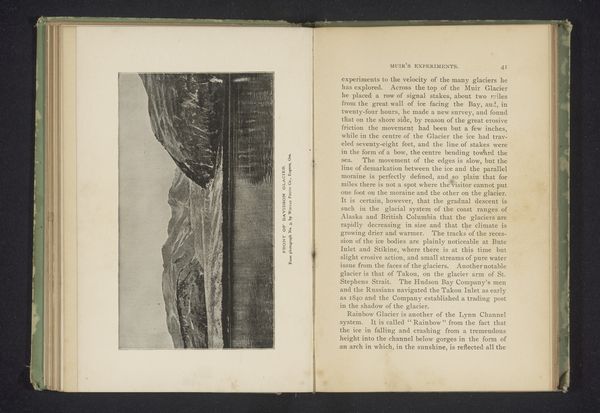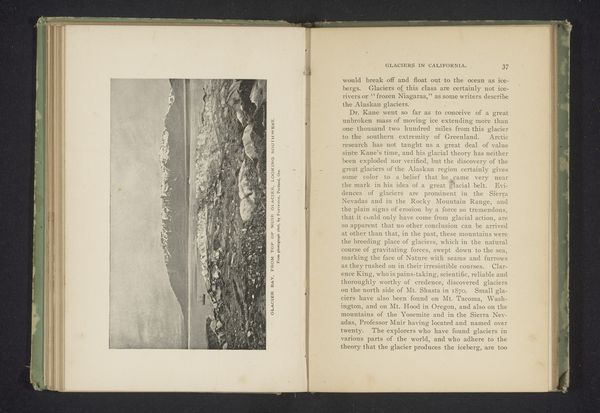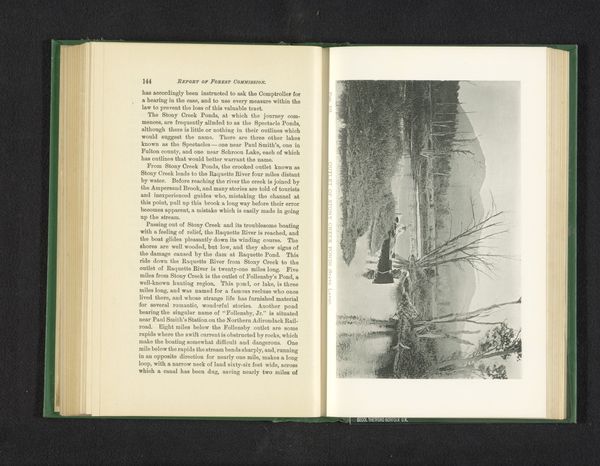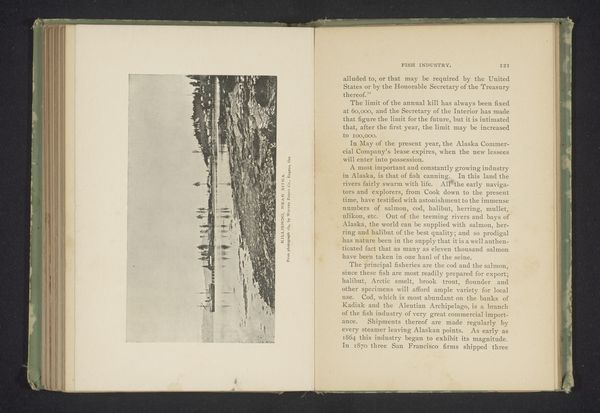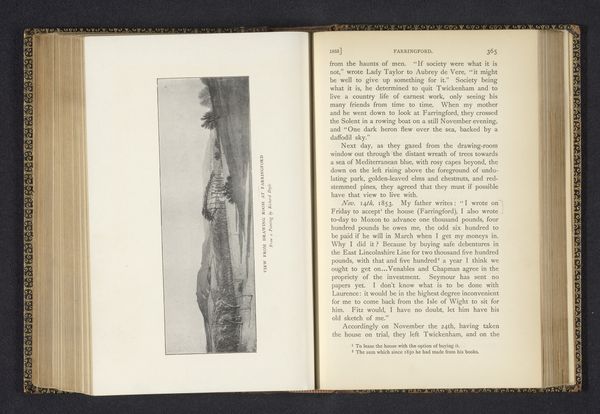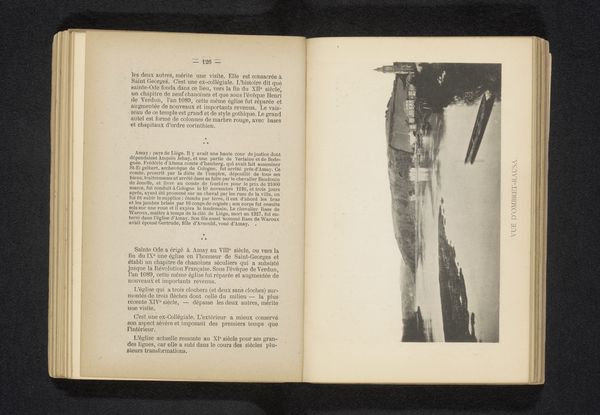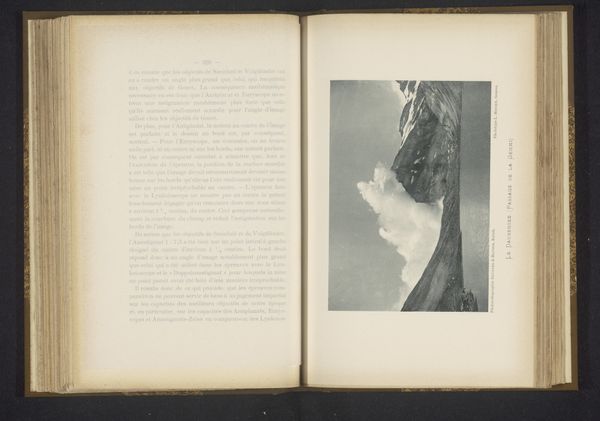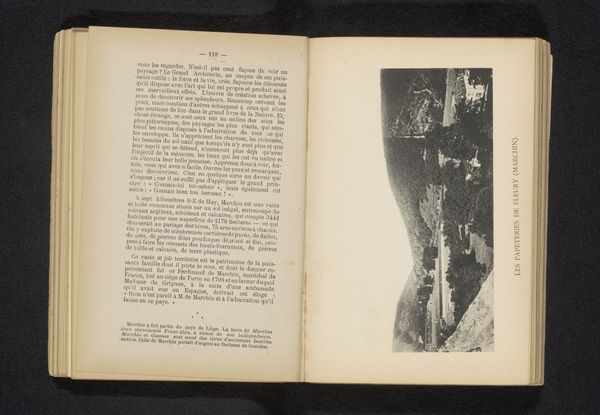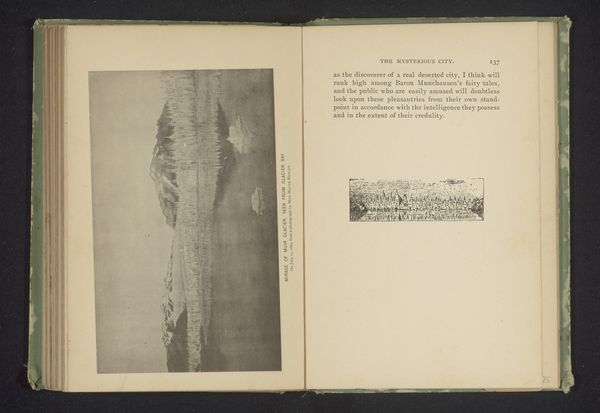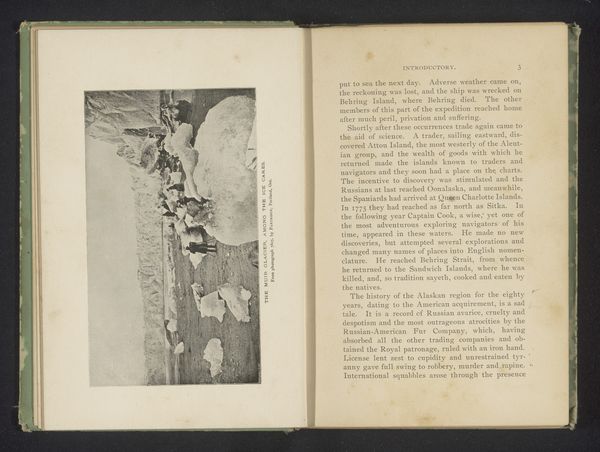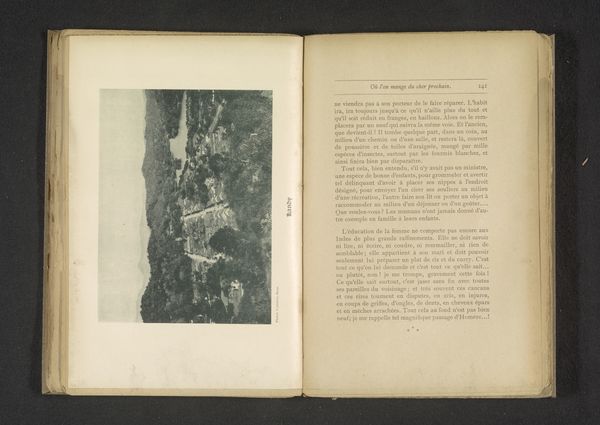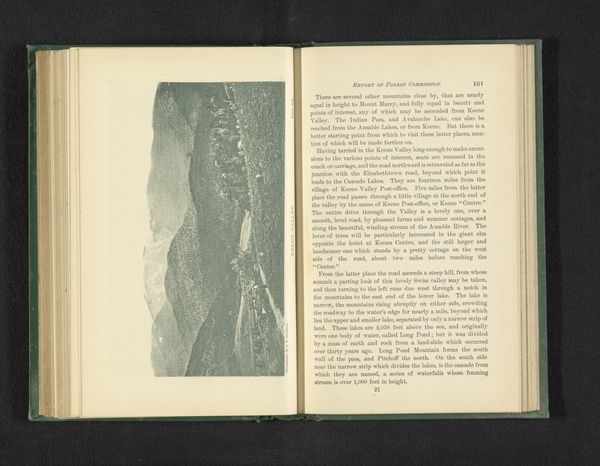
Landschap met ijsschots en twee mensen in een bootje in Taku Inlet before 1890
0:00
0:00
print, photography
#
16_19th-century
# print
#
book
#
landscape
#
photography
#
watercolor
Dimensions: height 92 mm, width 163 mm
Copyright: Rijks Museum: Open Domain
Curator: What a somber and striking composition! The grayscale emphasizes the starkness of the landscape. Editor: We are looking at a photographic print from before 1890. The work is entitled "Landschap met ijsschots en twee mensen in een bootje in Taku Inlet" - or, "Landscape with ice floe and two people in a boat in Taku Inlet" - and is attributed to William Henry Partridge. Curator: Partridge…The figures are dwarfed by the ice and imposing cliffs, underscoring the sublime indifference of nature. One gets a sense of the materials: paper, ink, perhaps the distinct texture suggesting it’s adhered to the printed page. Editor: Absolutely, the physical context is crucial. It appears within the pages of a book; one page displays the photographic reproduction, while the adjacent one presents descriptive text offering routes to this destination and nearby wonders. It's meant as advertising that caters to the emerging tourist industry in Alaska at the end of the 19th century. Curator: Indeed, viewing it now, one sees how the composition foreshadows later developments in photography and modernist landscape painting; think of monochrome palettes that flatten the depth of the pictorial field. It evokes something elemental... cold and raw. Editor: Cold, certainly. But perhaps Partridge wasn’t only after the aesthetics; rather, he's highlighting the exploitation of resources for commercial goals. Even those tiny figures, dwarfed as they are, symbolize that relationship between labor and nature. Curator: I wouldn't disagree, as that human element seems placed deliberately to reinforce a feeling of insignificance when compared with nature’s immensity. It becomes an evocative visual contrast. Editor: Regardless of intention, this image provides insight into both its immediate context—the promotion of travel to Alaska and wider historical currents linked with material extraction, manufacturing processes involved in the publication and distribution—as well its potential artistic influences that would echo through future generations. Curator: Precisely. It speaks volumes. Editor: Indeed, both literally and figuratively, an excellent convergence of image and idea!
Comments
No comments
Be the first to comment and join the conversation on the ultimate creative platform.
